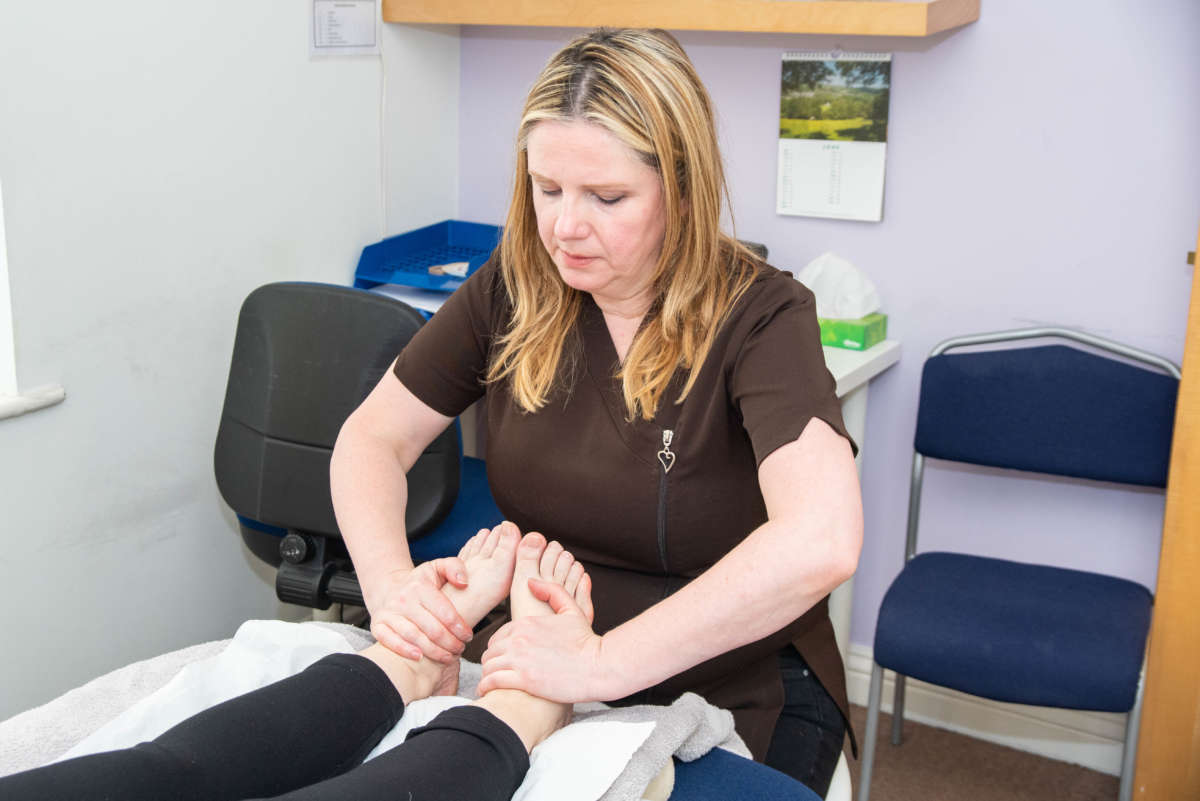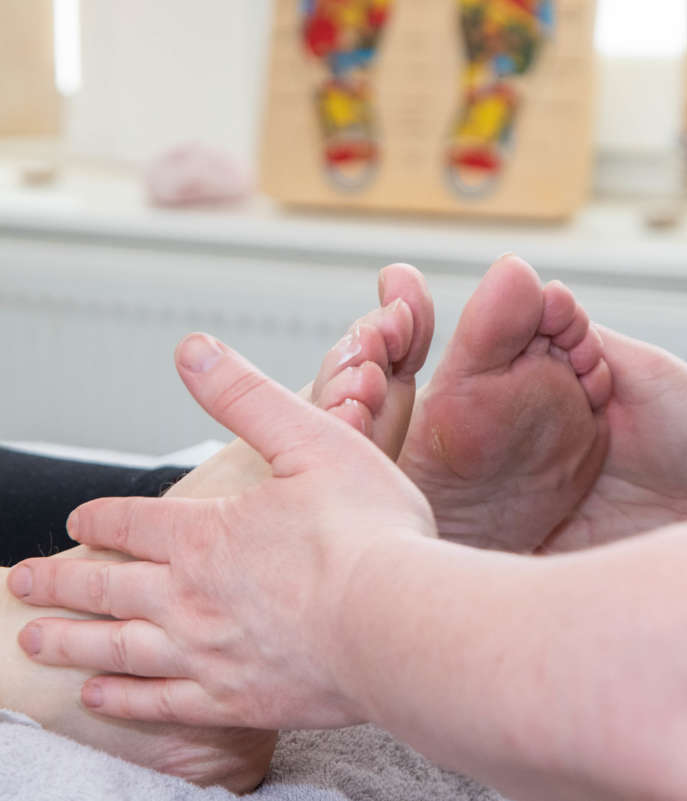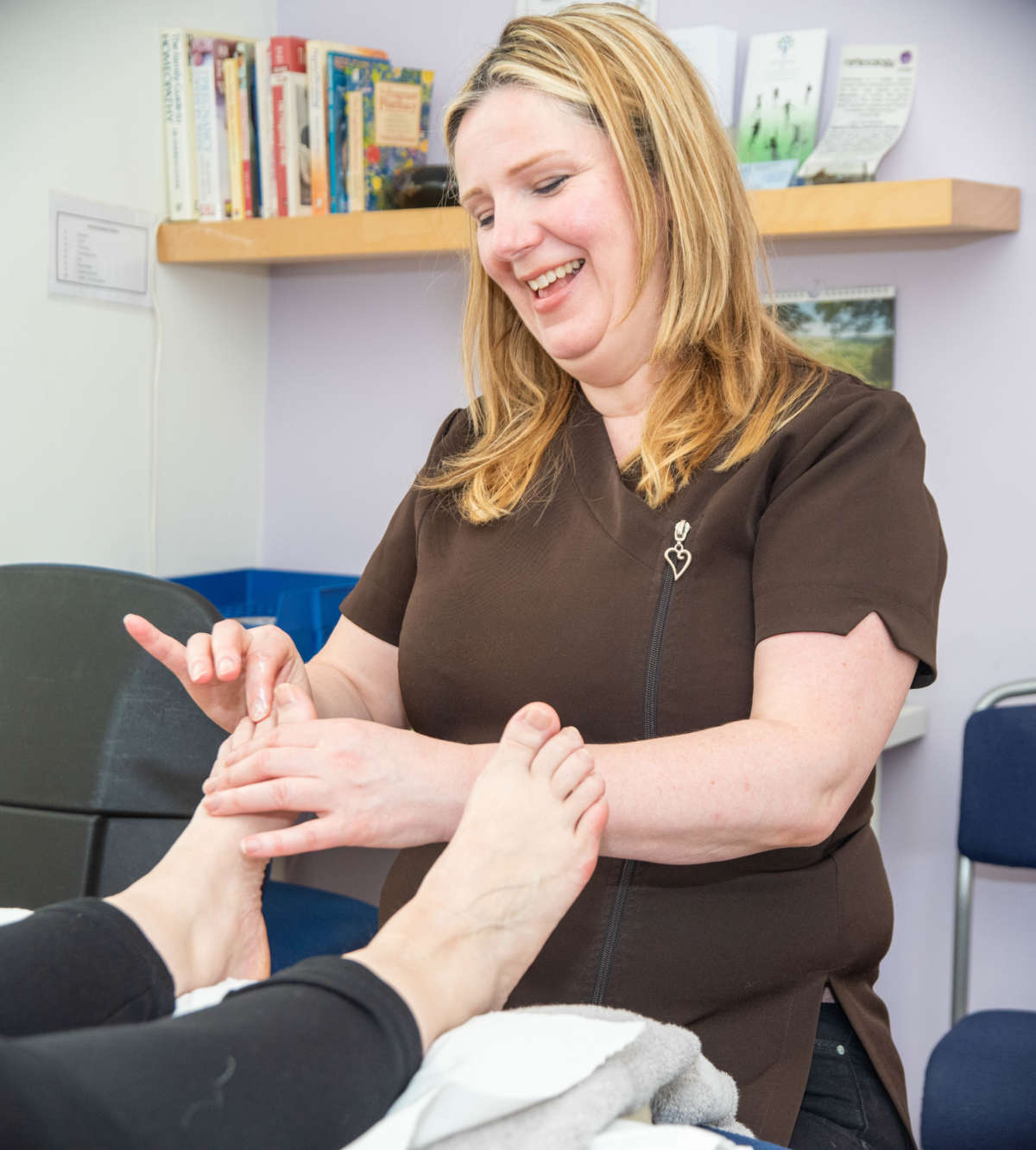
Feet First
The human foot is a complex structure, made up of 28 bones, including two sesamoid bones, and 40 joints, with 12 extrinsic and 19 intrinsic muscles. Such structural intricacy and daily stress make foot problems among the most common health complaints.
A Chiropodist/Podiatrist not only offers routine treatment for foot conditions, but also, through careful assessment is able to recognise and address the underlying cause of the problem. Common ailments such as corns and calluses can be treated quickly and painlessly, providing immediate relief. However, the primary cause of a painful foot, maybe a structural misalignment of a joint, affecting the way a person walks or runs.
A structural problem can be solved through custom-made shoe inserts, known as orthoses. Orthoses work by realigning the joints, thereby reducing abnormal pressures in the feet.
Regular visits to a Chiropodist/podiatrist will help your feet stay healthy and pain-free. If you do experience any foot problems, do not ignore them, as you will undoubtedly be storing up future problems that could easily be avoided.
Biomechanics
This is the study of the musculoskeletal system in relation to forces produced when walking or running. For example, long distance runners produce forces of up to four times their weight with a repetition rate of 721 impacts per kilometer when racing. Any abnormal movement increases internal forces and stresses, creating an environment where injury is likely.
Foot Function
The gait cycle is a sequence of events of which foot function forms one part. The aim of locomotion is to be an energy-efficient process that allows smooth movement. The function of a foot is governed by its anatomical structures and their interrelationship during movement. During the gait cycle the foot is able to exhibit two opposing features: a stable platform for propulsion and support at heel strike (supination), and flexibility to disperse the forces generated by locomotion while simultaneously adapting to the terrain under foot (pronation).
Abnormal foot function may arise as a result of excessive/prolonged pronation or supination occurring during the gait cycle. Pathological pronation or supination can arise as a result of malalignment in the lower limb, pelvis and back. Furthermore, excessive pronation or supination can trigger other problems in the foot and leg. In such cases it is pertinent to undertake a biomechanical evaluation.
Biomechanical Assessment
During the gait cycle the foot must function both as a mobile adaptor and a rigid lever at the appropriate phases of the gait. Pathomechanics (abnormal movement) can lead to overuse injuries, such as those commonly seen in sporting activity. Individuals with pronated or supinated feet can produce abnormal forces, that can consequently lead to injury.
A Chiropodist/Podiatrist can analyse your gait and produce a treatment plan that can include, the prescription of foot orthotics (modify the function of your feet as you continue to wear them), exercise and footwear advice. Which will heal the injury and reduce the risk or any reoccurrence.
Conditions treated include:
- Arch pain
- Heel pain syndrome
- Planter fasciitis
- Achilles tendinitis
- Ankle pain
- Shin splints
- Runner’s knee
- Hip and lower back pain


Foot Health
To be sure your feet get the best treatment, always visit a state registered chiropodist/podiatrist. People who treat foot problems are not all the same! A state registered practitioner has completed a degree course in Podiatric Medicine and worked for several years within the NHS, before beginning in private practice. Do not be fooled by the name, look out for the qualifications – BSc (Hons) Podiatry, SRCh and MChS.
All equipment is sterilised and complies with Department of Health Regulations.
Our chiropodists and podiatrists are Andrea Gledhill and Simon Walker.
